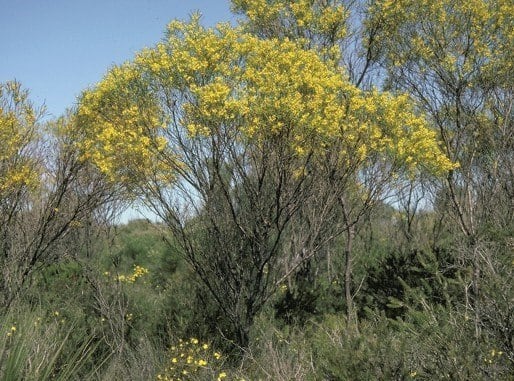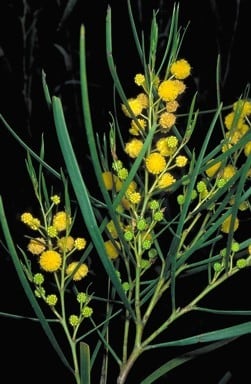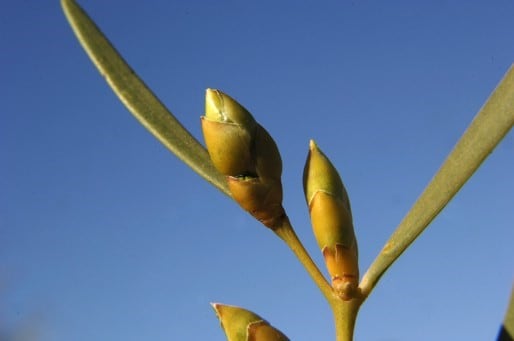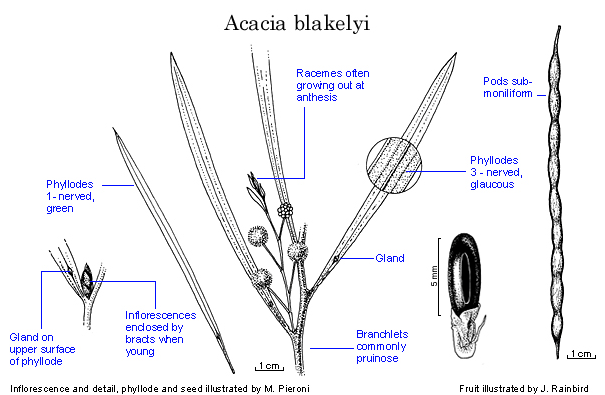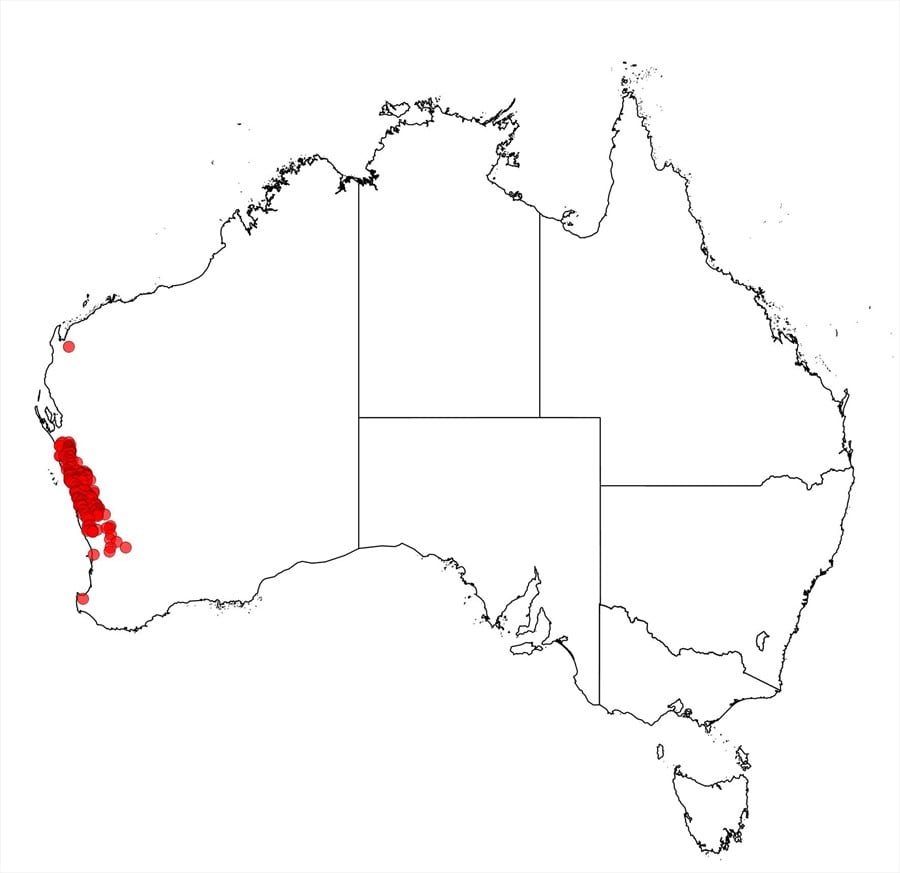Acacia blakelyi Maiden
WATTLE
Acacias of Australia
Family
Fabaceae
Distribution
Common from the Cooloomia Nature Reserve, c. 70 km N of Kalbarri, S to near Regans Ford and Piawaning in south-western W.A.
Description
Often dense glabrous shrub or tree, 1–3 m high. Branchlets flexuose, commonly pruinose. Stipules caducous. Phyllodes horizontally flattened, linear to very narrowly elliptic, 7–15 cm long, 2–15 mm wide, acute to obtuse, often mucronate and ±coarsely pungent, thinly to moderately coriaceous, green or glaucous, 1- or 3-nerved, sometimes obscurely reticulate between nerves; gland on upper surface (3–) 5–12 (–17) mm above pulvinus. Inflorescences 3–6-headed racemes, enclosed when young by conspicuous imbricate scarious striate bracts; raceme axes 2–6 cm long, sometimes growing out during anthesis; peduncles 7–15 mm long; heads globular, 7–8 mm diam., 20–30-flowered, bright golden. Flowers 5-merous; sepals united into a ±truncate calyx. Pods submoniliform with segments narrowly elliptic, straight to shallowly curved, to 16 cm long, 4–5 mm wide, thinly coriaceous-crustaceous, finely reticulate longitudinally, sometimes pruinose. Seeds longitudinal, 5.5–7 mm long, elliptic to narrowly elliptic or ±narrowly oblong, shiny, black; aril yellow-brown.
Habitat
Occurring commonly in sand, sand over laterite, clayey sand and gravelly sand, less frequently on loam or white beach sand, on sand plains and in woodland or tall shrubland.
Specimens
W.A.: 8 km E of Piawaning, 9 Sept. 1959, T.E.H.Aplin s.n. (PERTH); 24.2 km from Gorge Rd intersection towards Ajana on Kalbarri/Ajana road, R.S.Cowan A818 & R.A.Cowan (CANB, NY, PERTH, US); Cooloomia Nature Reserve, 21 km SW of Cooloomia HS, S.D.Hopper 1420 (PERTH); 45 km N of Murchison R. on North West Coastal Hwy, B.R.Maslin 3722 (CANB, K, MEL, PERTH).
Notes
Among species with diaphyllodinous phyllodes (see A. diaphyllodinea for definition and discussion) A. blakelyi is closest to A. scirpifolia which has narrower, normally terete to subterete phyllodes but is otherwise very similar to the narrower, green, 1-nerved phyllode form of A. blakelyi; this form may also resemble A. rostellifera. The broader, glaucous phyllode form of A. blakelyi is superficially similar to A. xanthina.
Variable in phyllode colour, width and venation, ranging from broad, 3-nerved and glaucous to narrow, 1-nerved and green. The variation pattern is complex and requires further study; there is some suggestion that it is edaphically correlated, for specimens with glaucous phyllodes are the most common and usually were taken from plants growing in yellow sand; specimens with green phyllodes are less frequent and often occur in loam or white sand.
FOA Reference
Data derived from Flora of Australia Volumes 11A (2001), 11B (2001) and 12 (1998), products of ABRS, ©Commonwealth of Australia
Author
B.R.Maslin
Minor edits by J.Rogers
This identification key and fact sheets are available as a mobile application:
URL: https://apps.lucidcentral.org/wattle/
© Copyright 2018. All rights reserved.
